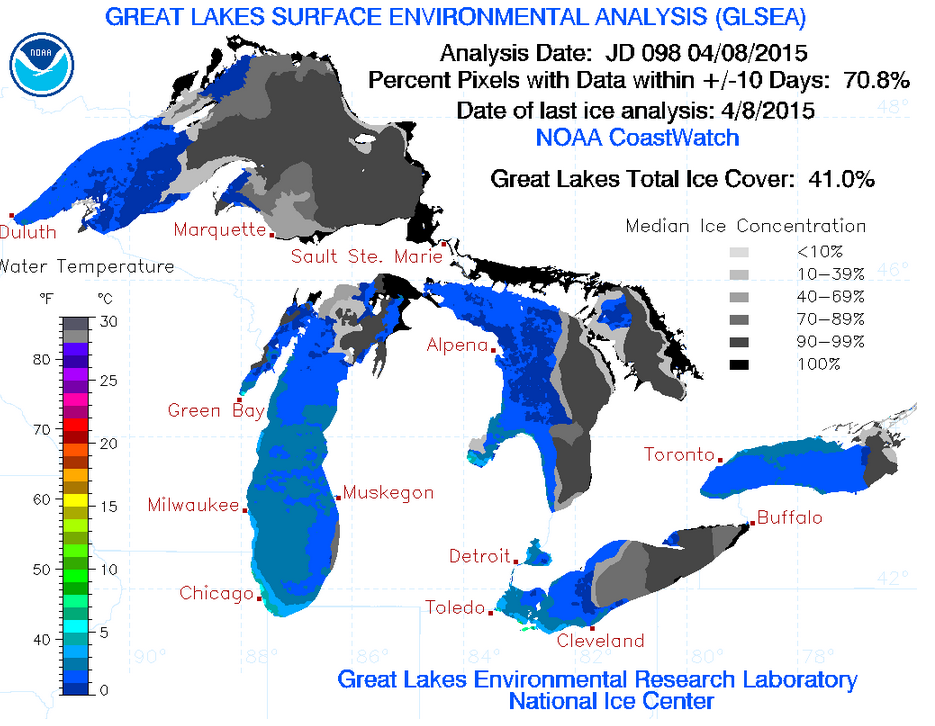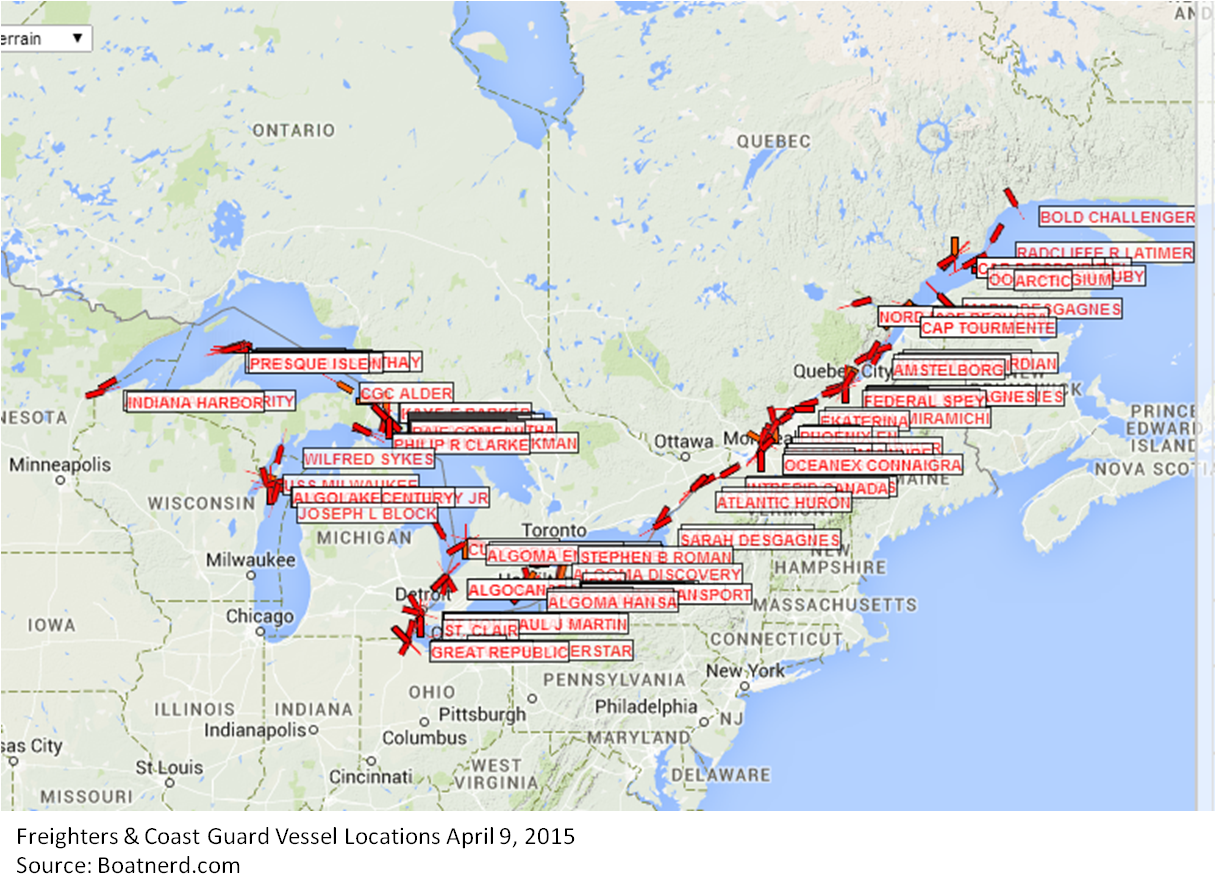Shipping and Logistics

More Ice Breakers Needed on Great Lakes
Written by Sandy Williams
April 9, 2015
Vessels transporting iron ore on the Great Lakes are encountering heavy ice in the Whitefish Bay area. Breaking the ice has been challenging for US and Canadian Coast Guard vessels. Strong winds over the weekend pushed ice from Lake Superior to the bay, covering about 35 square miles. Broken ice plate 24-30 inches thick clogs Whitefish Point to the Canadian shoreline, according to Mark Gill, director of vessel traffic Services for the US Coast Guard at Sault Ste. Marie. Ice is piled as thick as eight feet with chunks the size of pickup trucks.
In an update from the Lake Carrier’s Association, President James Weakley said, “The ice formations were so formidable that a number of LCA’s members chose to delay getting underway rather than risk a repeat of last spring when ice caused more than $6 million in damage to the vessels.”
US and Canadian icebreakers have been experiencing mechanical issues compounding the problems, said Weakley. The USCG Mackinaw is currently operating at less than full power due to a problem with a propulsion unit.
Coast Guard icebreakers were working Monday to free ten ships trapped near Whitefish Point. On Wednesday the trapped convoy finally began moving after assistance from four Coast Guard cutters from the US and Canada. The vessel Kaye E. Barker sustained ice damage and was forced to unload part of its cargo to sister ship Lee A. Tregurtha before heading for repairs in Wisconsin.
On Thursday, the Canadian Coast Guard cutter Pierre Radisson began escorting seven of the upbound lakers across Lake Superior. The CCGS Samuel Risley succeeded in clearing two of the six downbound vessels from the ice on Wednesday.
Lake Erie conditions are not as severe as last year according to Stéphane Julien, Captain of the CCGS Pierre Radisson, in a report by the Daily Great Lakes and Seaway Shipping News. In April 2014 the ice on Erie was crunchy, thick and solid, said Julien. This year the Radisson encountered softening ice that still required some icebreaking.
The Lake Carriers Association reported shipments of iron ore in March were at the lowest level for the month since 2010, totaling 800,000 tons. The drop is dramatic when compared to our last mild winter in 2013 when March shipments at Great Lakes and St. Lawrence Seaway ports totaled 1.9 million tons. A year ago March, iron ore shipments totaled 1.1 million tons. This year’s total was 60 percent below the month’s 5-year average. The drop was attributed to ice conditions and insufficient icebreaking resources.
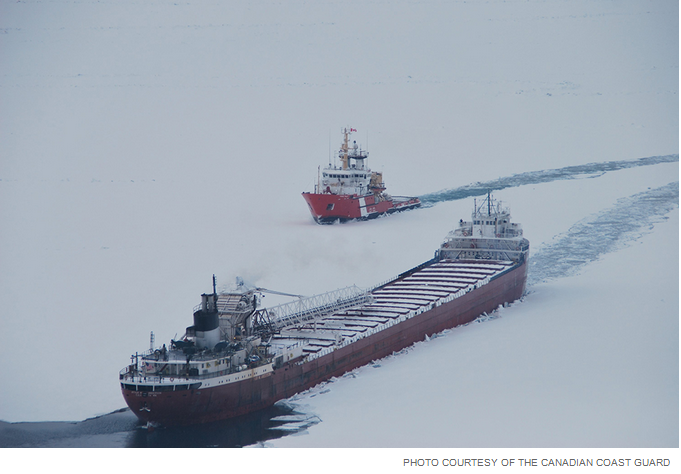
“Right now American steel mills need every competitive advantage they can get,” said Weakly. “A slow start to resupplying the mills after the winter closure is a worry the industry could do without. This is just another clear indication that the Lakes need, at a minimum, another heavy icebreaker to pair with the MACKINAW, and another 140-foot-long icebreaking tug to cover for the one that has been sent to the Coast Guard yard in Baltimore for service life extension.”
US and Canadian Coast Guard work in tandem to break ice for freighters crossing the Great Lakes and through the Soo Locks. The US Coast Guard operates nine cutters on the Great Lakes while Canada has two.
Interlake Steamship Company reports shipping moving slower than hoped for. “The Great Lakes are still dealing with what is now a second really difficult winter in a row,” said Brendan O’Connor, Vice President Marketing and Marine Traffic. “While Canadian and US Coast Guard assistance is still critically important and completely appreciated, we have been impacted by fewer ice breaking assets than we need and the current industry performance statistics support this position.”
“We have been operating on Lake Superior near Whitefish Bay, but had lost several days while waiting for Coast Guard assistance. To reaffirm the need for assistance, Interlake and other companies within the Great Lakes industry have sustained damage to vessels as a result of the ice that remains in our areas of operation. The lower lakes and rivers are in better condition than Lake Superior, but our loss of performance and difficulty leave us and our customers concerned about meeting expectations. We operate in a fixed navigation season and we depend on historical performance to meet the expectations of those we serve and this year is presenting yet another atypical start for our Great Lakes maritime industry.”
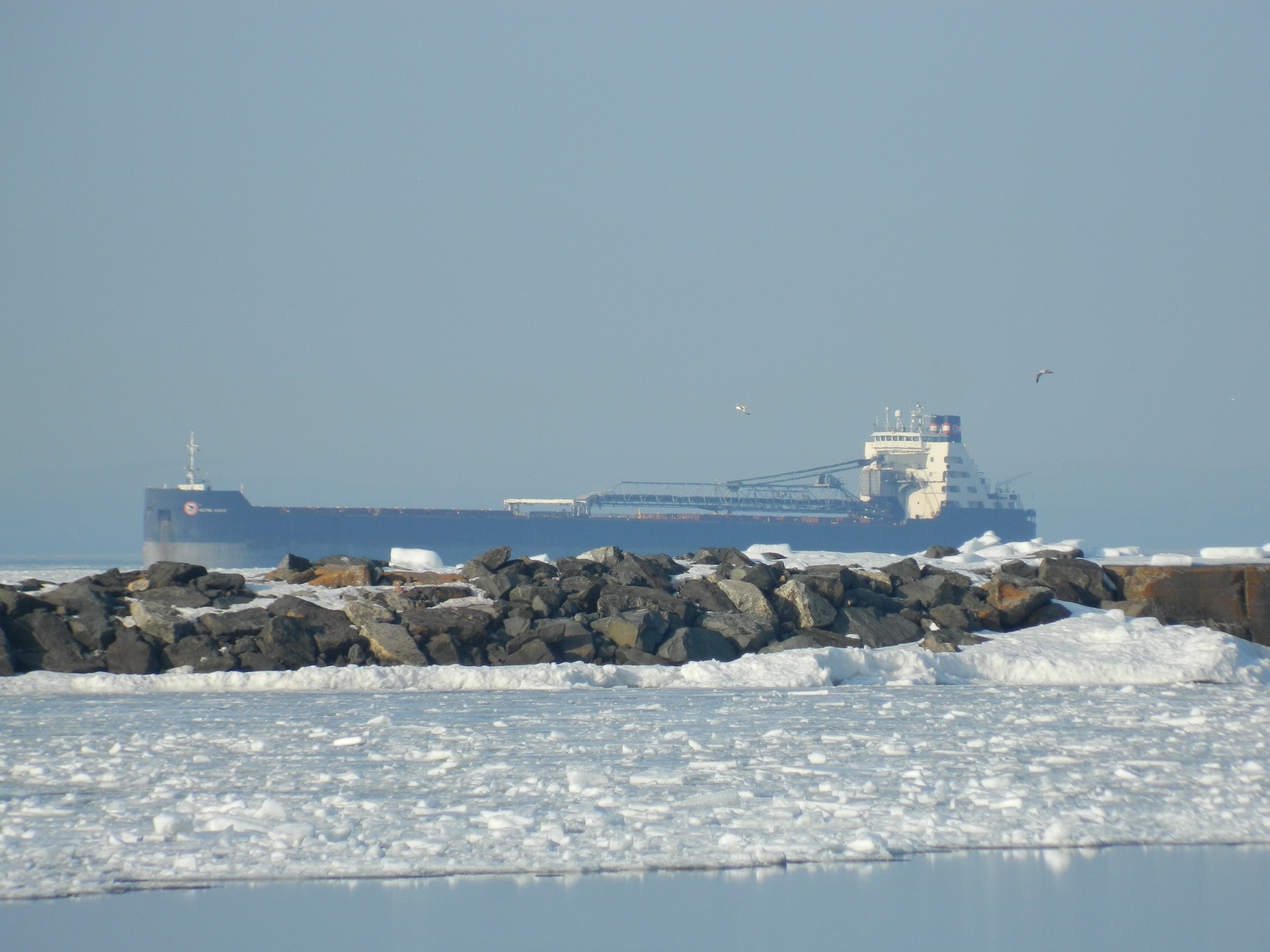 Algoma Central reports vessels are moving again. “Conditions in the Whitefish Bay area of Lake Superior remain difficult but vessels which were stuck for several days are now moving with the help of several ice breakers,” said Bruce Partridge, Director of Sales at Algoma Central. “The arrival of the Canadian heavy ice breaker Pierre Radisson seems to have made the difference in getting the vessels moving again. Our vessel the m/v Algoma Olympic is currently moving downbound in a small convoy towards the Soo locks after being stopped for several days in the ice just outside Whitefish Bay.”
Algoma Central reports vessels are moving again. “Conditions in the Whitefish Bay area of Lake Superior remain difficult but vessels which were stuck for several days are now moving with the help of several ice breakers,” said Bruce Partridge, Director of Sales at Algoma Central. “The arrival of the Canadian heavy ice breaker Pierre Radisson seems to have made the difference in getting the vessels moving again. Our vessel the m/v Algoma Olympic is currently moving downbound in a small convoy towards the Soo locks after being stopped for several days in the ice just outside Whitefish Bay.”
“In other areas of the Great Lakes, traffic seems to be moving at a more ‘normal’ pace at the moment. Weather and wind conditions over the next couple of days may cause some concern as winds consolidate drifting ice and put pressure along the eastern Lake Huron and Lake Erie areas. We are hopeful the worst is behind us and things should get better from here.”
The St. Lawrence Seaway is also up and running for the season. The Port of Hamilton in Ontario received its first vessel traveling through the Seaway on April 6. The Pacific Huron arrived loaded with steel coils from Spain and Italy.
“We had a slightly late start as a result of the icy winter, but we are ready for a busy year now that we’re rolling,” said HPA President & CEO Bruce Wood in the Seaway Shipping News. “As the season’s inaugural shipment illustrates, finished steel is a critical component of the Port’s total cargo tonnage.”
More than 500,000 tonnes of finished steel passed through the Port of Hamilton in 2014. Hamilton, the largest Canadian port on the Great Lakes, handles 28 percent of all the cargo traveling through the Great Lakes-St Lawrence Seaway.

Sandy Williams
Read more from Sandy WilliamsLatest in Shipping and Logistics

Wittbecker on Aluminum: US-China trade war clobbers cross-Pacific trade
Container shipping lines have sharply increased blank sailings on Transpacific routes in response to escalating trade tensions between the US and China.
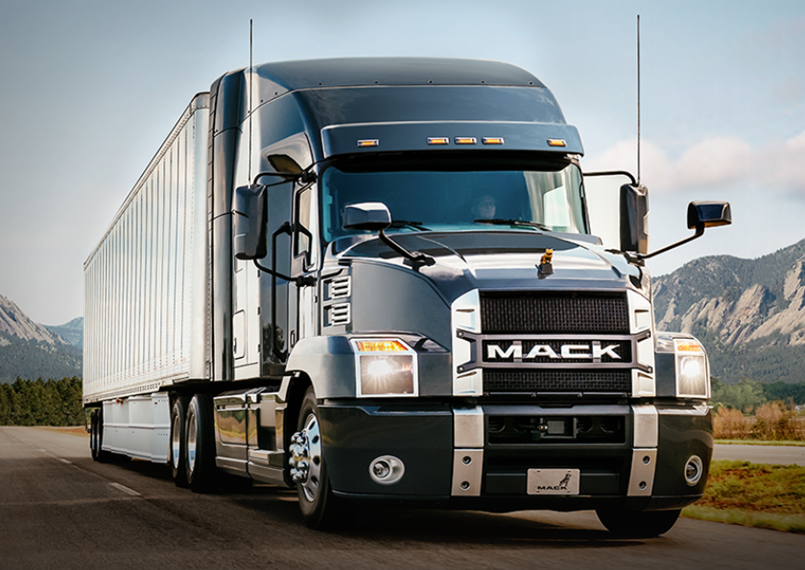
Volvo plans to lay off up to 800 workers at US truck plants
The company cited uncertainty about freight rates and demand, regulatory changes and the impact of tariffs.

Trump signs executive order aimed at making US shipbuilding ‘great again’
President Trump on Wednesday signed an executive order meant to breathe new life into American shipbuilding and curb Chinese dominance in the sector.

Great Lakes iron ore trade fell again in March
Recall that shipments also saw a sharp decline in January.

Longshoremen ratify contract with maritime alliance
Nearly 99% of ILA members voted in favor of a new labor deal with the United States Maritime Alliance that covers workers at ports on the Atlantic and Gulf coasts.

